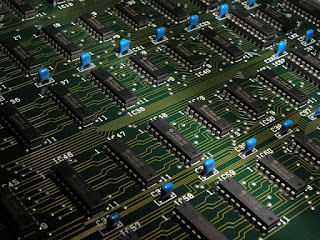MIT Researchers Develop Light-Based Chips
This technology uses light from the flow of electrons to transmit data. The researchers said that chip can send 50-100 times the amount of data per second than the electronic traditional chips.
"The Data running through the power lines is limited bandwidth and power density, which creates barriers to performance for microchip semiconductor in modern computer systems, from mobile phones to large-scale data centers," write researchers in the scientific journal Nature this week's Edition.
But efforts to build a light-based chips have been hindered by the difficulty of integrating the components, both electronic as well as Photonic, at the chip. So far, it has restricted the ability of the manufacturer.
Traditionally, researchers have been trying to develop a custom process separately for the manufacture of Photonic devices a chip. However, this approach usually undermines the process of integrating high-end electronic devices on chip equal in economies of scale.
Manufacturing process developed by the MIT team on the other side using the same standard micro-foundry technique used a normal electronic component manufacturers.
This new approach has allowed them to build an electronic-Photonic system on a single chip, consisting of more than 70 million transistors and photonic components that 850 work together to provide the function logic, memory, and interconnection.
Using a new process to produce a prototype, the researchers said is capable of reaching speeds of data transfer at speeds of 300 gigabits per second per square millimeter.
According to Chen Sun, researchers from UC Berkeley and author of in Nature, 20-30 percent of the electricity used in corporate data centers is derived from the data transfer between the processor, memory, and network cards.
"By applying electronic-Photonic chips, organizations can effort saving enormous power in their data centers," he said.









Post A Comment
No comments :